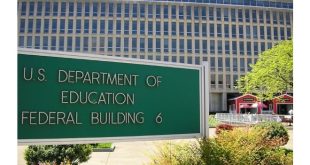The U.S. Supreme Court in Gratz v. Bollinger (2003) narrowly struck down the University of Michigan’s points-for-race admissions system in the undergraduate program but upheld the law school’s race-as-a-plus-factor system in companion case Grutter v. Bollinger (2003).
Using race as a “plus” factor in admissions by definition means schools use race as a “minus” factor. When an applicant is admitted based on race, another is rejected based on race.
Citing Grutter, the Supreme Court in Fisher v. University of Texas (2016) upheld the use of racial preferences in admissions by a vote of 4-3. (Justice Elena Kagan recused herself, and Justice Antonin Scalia had died).
The original idea behind “affirmative action,” now a euphemism for racial preferences, was to redress past discrimination against black Americans by widening the pool of job applicants to include a larger number of qualified minorities. President Richard Nixon created racial quotas in 1971 when he authorized the U.S. Department of Labor to set specific goals and timetables to correct the “underutilization” of blacks by federal contractors.
The goal of finding qualified racial minorities historically shut out of the process morphed into an obsession with “diversity,” with institutions lowering standards to hire and admit more racial minorities. For example, black applicants generally are admitted to colleges and universities with lower grades and standardized test scores than Asian, white, and Hispanic applicants.
The Supreme Court now has a chance to overturn Grutter. It has agreed to hear cases challenging discriminatory admissions policies at Harvard University and the University of North Carolina at Chapel Hill.
The Washington Post reported the story and noted an important aspect of the cases. The vote in Grutter was 5-4. With a supposedly conservative court, racial preferences could end. In Fisher, for instance, Chief Justice John Roberts dissented with Justice Clarence Thomas and Justice Samuel Alito. If the three newest justices also oppose racial preferences, the policy might be history.
Challengers say the court should overturn those precedents and rule that considerations of race, which aid underrepresented Black and Hispanic students, violate federal law and the Constitution.
…
Edward Blum, president of Students for Fair Admissions, the group that spearheaded the affirmative action challenges, said polls show that Americans strongly disapprove of race-conscious admissions.“In a multi-racial, multi-ethnic nation like ours, the college admissions bar cannot be raised for some races and ethnic groups but lowered for others,” Blum said in a statement. “Our nation cannot remedy past discrimination and racial preferences with new discrimination and different racial preferences.”
Photo credit: By Dennis Ludlow – Sharkshock – Own work, CC BY-SA 4.0, link
Do you like this post? Sign up for more!
 CURE News and Clergy Blog News and Commentary for Christians
CURE News and Clergy Blog News and Commentary for Christians



